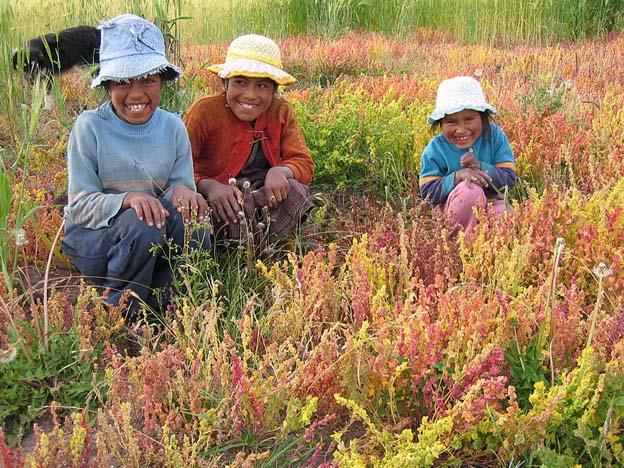
(above) Children in Puno, where 51% of school age children natively speak a language other than Spanish. Photo: Wikimedia Commons/Michael Hermann
Peru faces challenges in education for indigenous children
September 13, 2013 - Peru This Week
By Rachel Chase
Bilingual education a necessity in many regions.
Eduardo Vega Luna, Peru's ombudsman ("defensor del pueblo"), announced yesterday the release of a new study evaluating Peru's efforts to provide education in indigenous languages.
2007 government statistics published in a report by UNICEF and other charitable organizations reveal that more than 12% of school age children in Peru speak an indigenous tongue as their first language. In some provinces, that figure rises well over 50%: in 72.58% of children in Apurímac and 62.82% in Huancavelica speak Quechua as their first language. However, the Defensoría del Pueblo reports that most provinces devote less than 1% of their educational resources to intercultural and bilingual education.
Vega Luna said in a press release that educators have a long way to go in educating indigenous children. "The historical exclusion experienced by indigenous communities means that the state has to work harder to reduce the existing educational gaps, keeping in mind that 46% of children and adolescents from indigenous communities don't receive education in their first language," explained Vega Luna.
Daniel Sánchez, the director of the Indigenous Peoples Program, noted that one of the problems faced by children who don't speak Spanish as a first language is the lack of teachers that speak indigenous languages.
"The state needs to work harder to capacitate specialized teachers in teaching indigenous communities. We need universities and teaching schools to provide more courses and programs in intercultural and bilingual education, especially for teaching in secondary schools."
According to the press release, Sánchez also said that "authorities are still hiring Spanish-speakers in posts where they really need a bilingual teacher […] we need to make sure we're using teachers who know the language and the culture of the indigenous community where they're going to be working."
Peru is home to a number of indigenous languages, including Aymara and Quechua, which are spoken primarily in the highland regions.